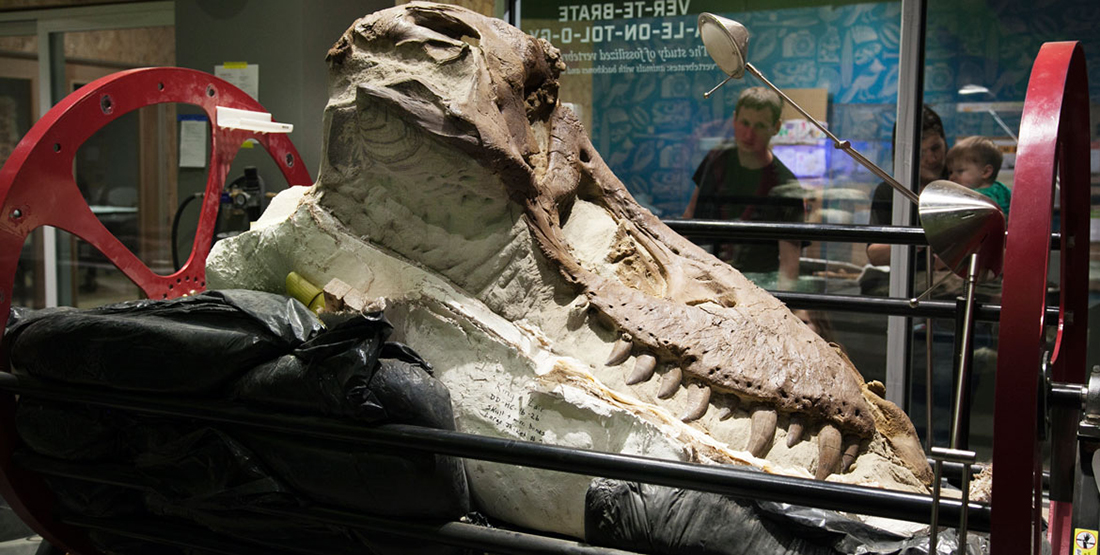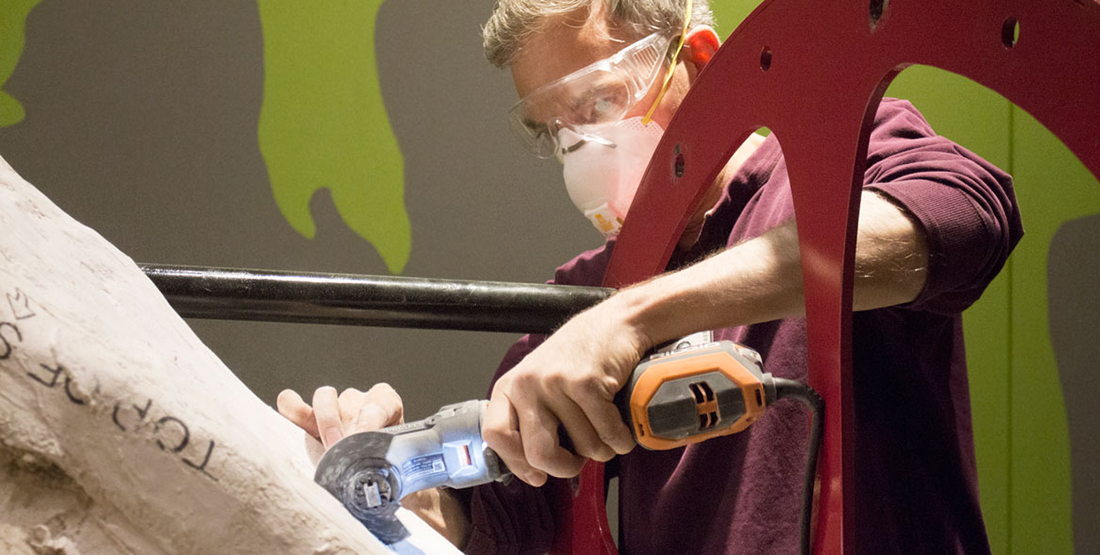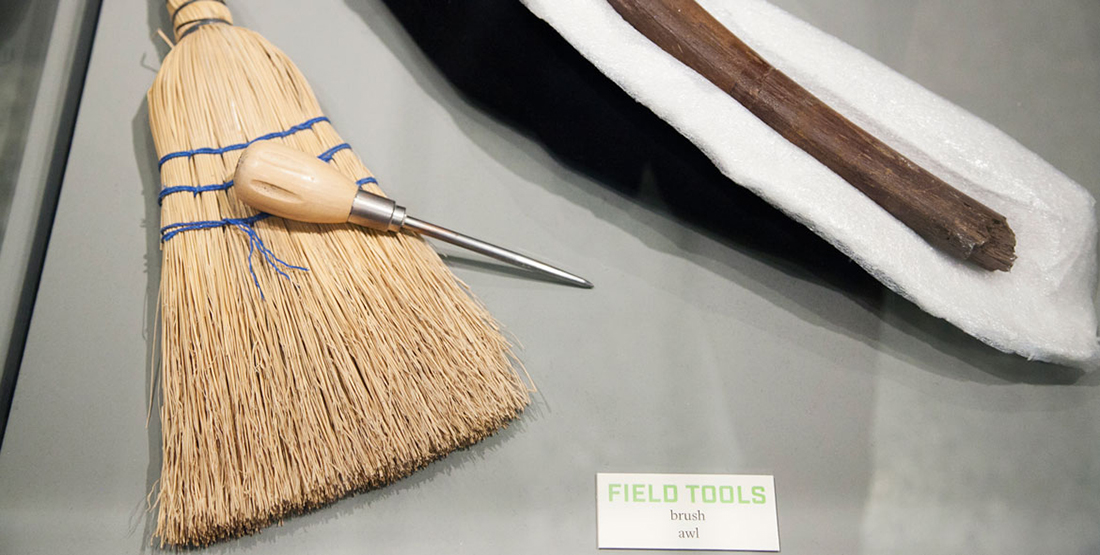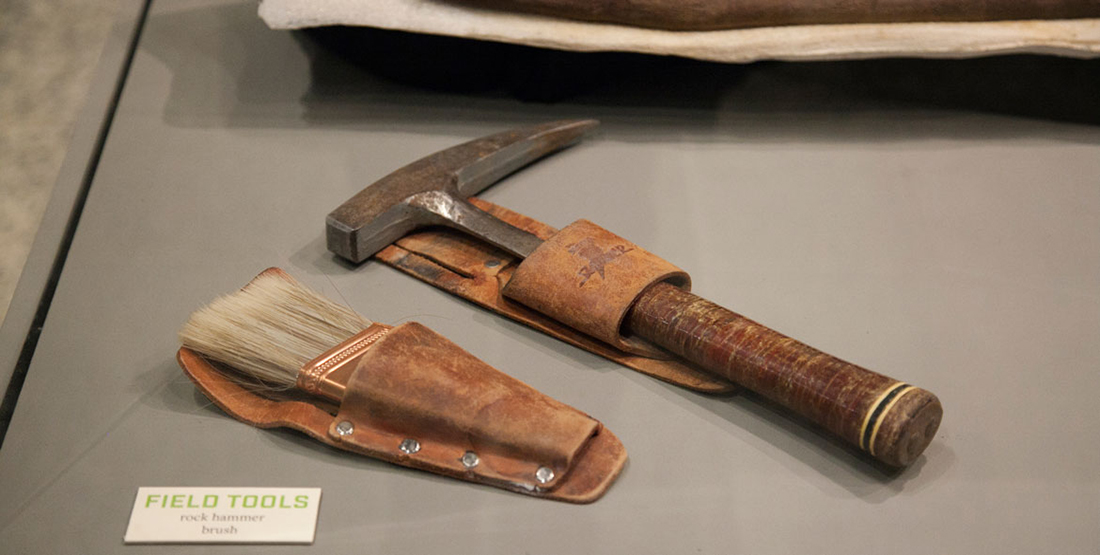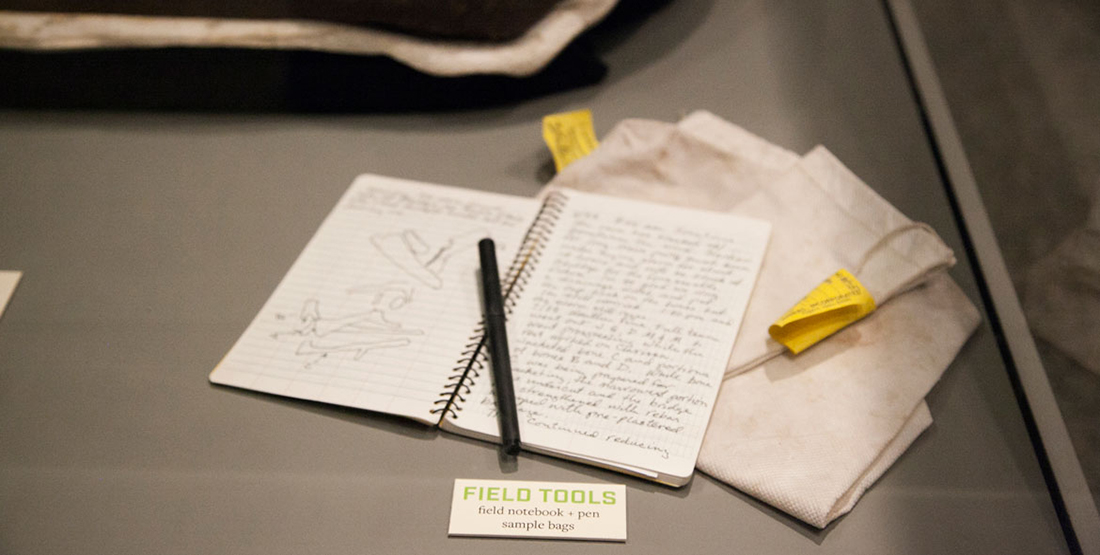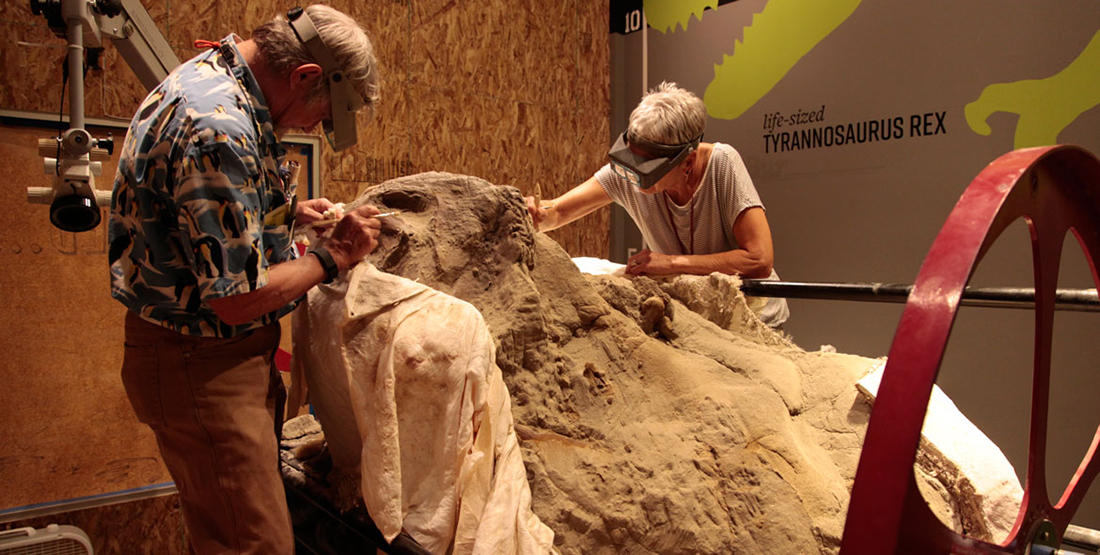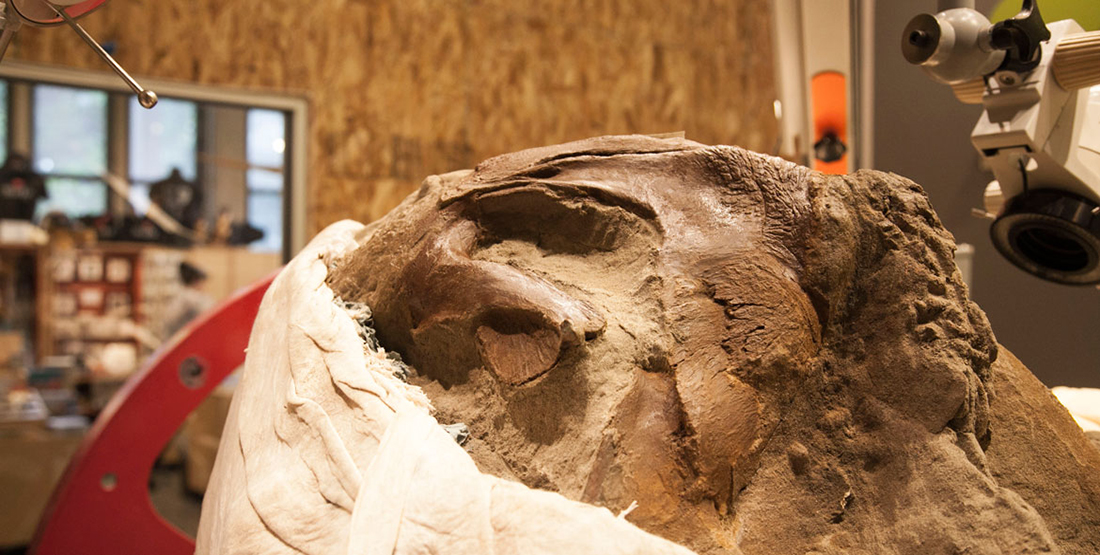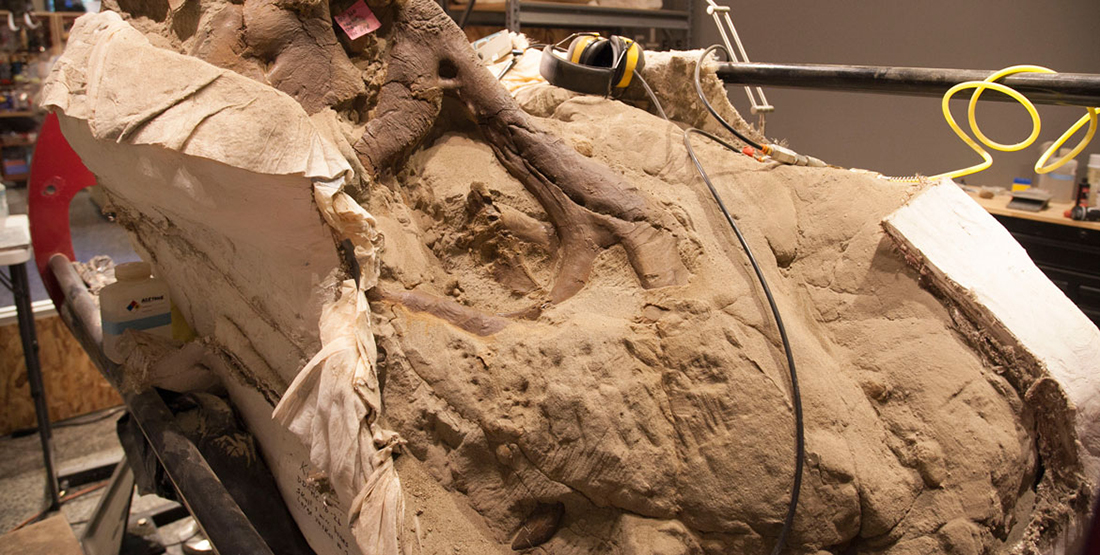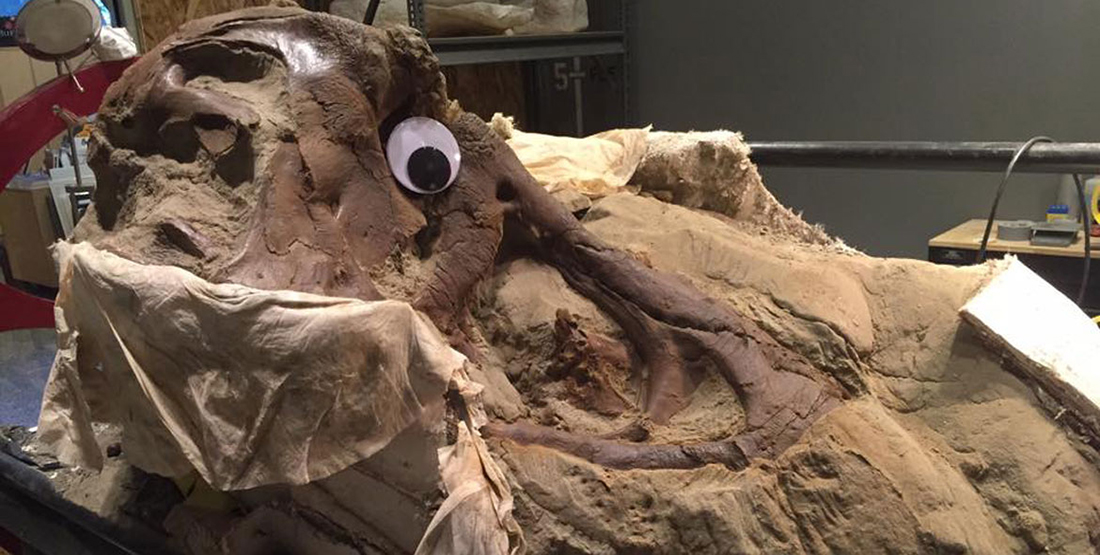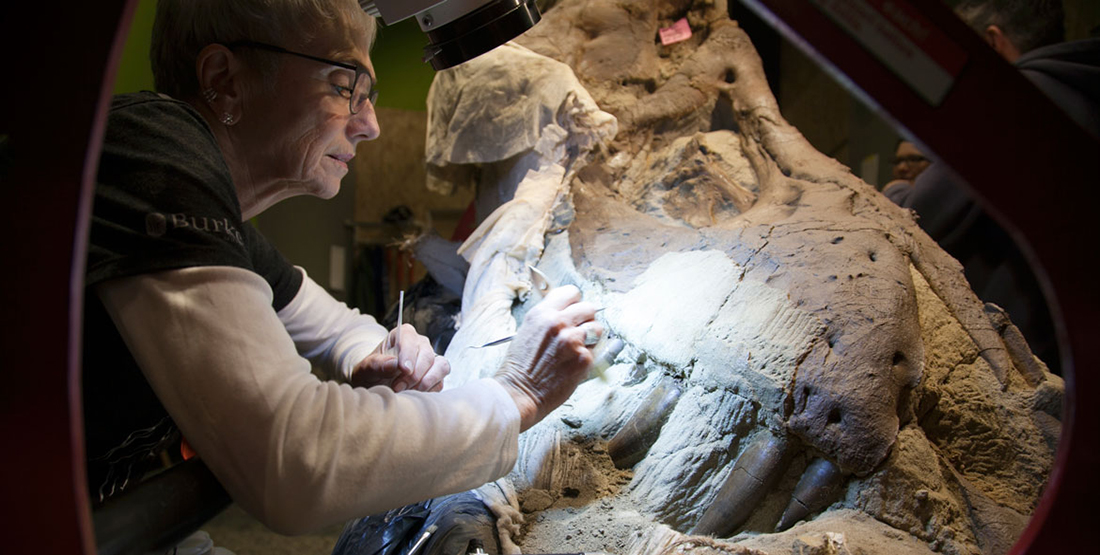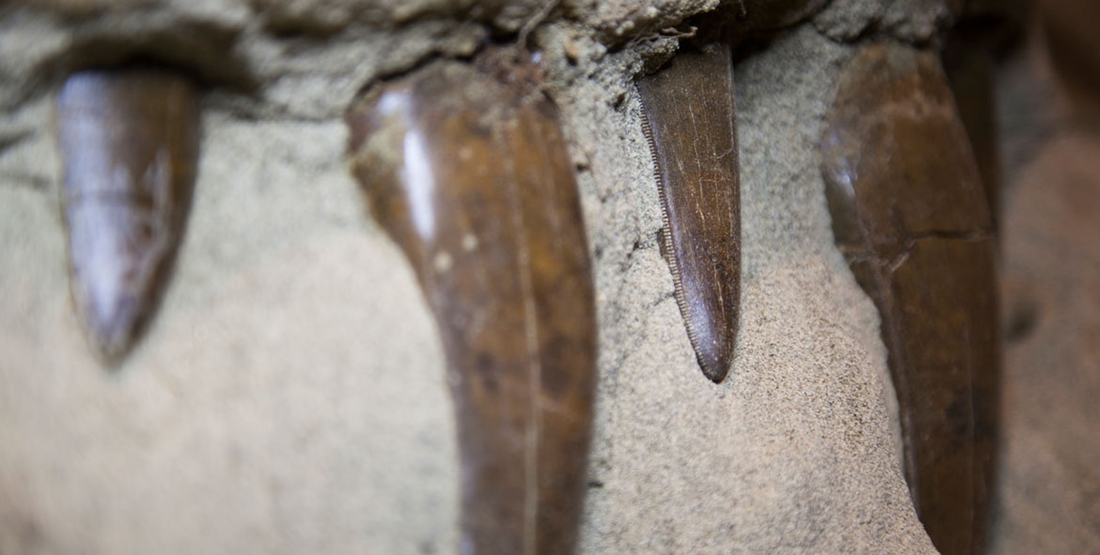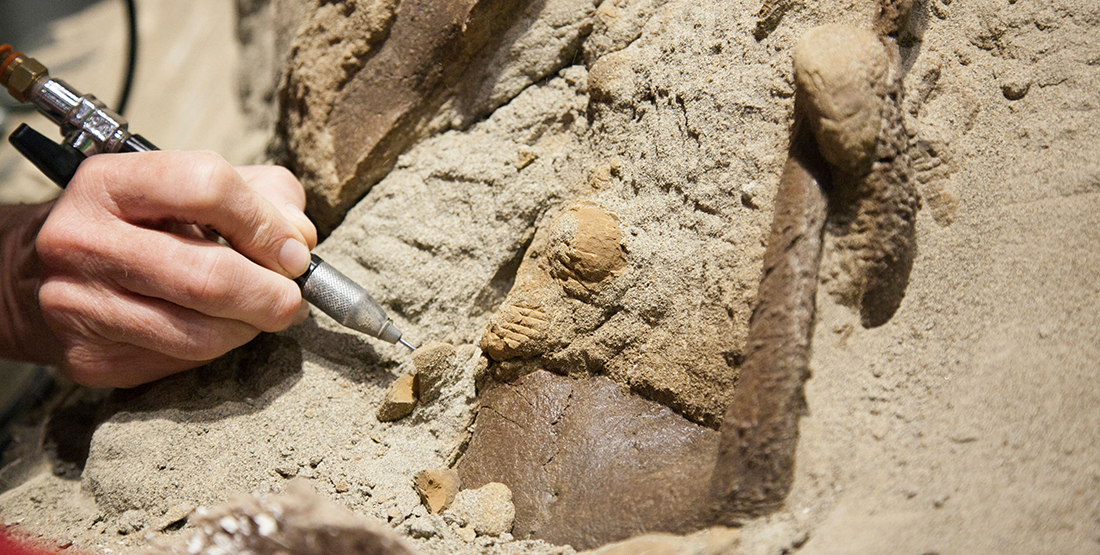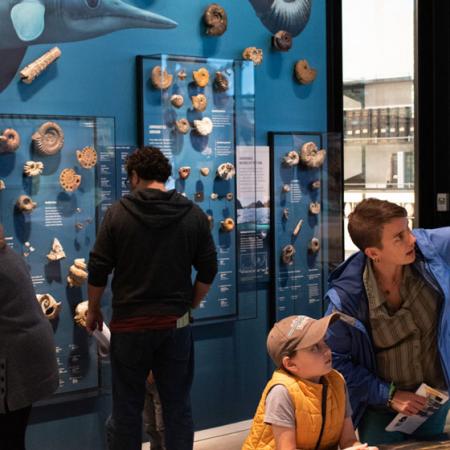In the months since we lowered the massive skull into its custom “Rex Rack,” it has gone from being almost fully-encased in sandstone to showing off these incredibly well-preserved teeth…
When we remove a fossil from the field, we keep it encased in a good amount of the matrix—the sediment or rock where it was found—and wrap it in a plaster field jacket to protect it. That way we can save the delicate detail work for preparators back at the museum.
That’s exactly what happened with the T. rex skull when it was collected* by a team of Burke paleontologists and volunteers from the fossil riverbed where it was discovered in the Hell Creek Formation in Montana as part of the Hell Creek Project led by Greg Wilson, Burke Museum curator of vertebrate paleontology.
Prior to the opening of the T. rex LIVE, our team started cutting into the plaster field jacket, referencing handwritten notes on the cast to avoid hitting any exposed areas of bone.
The team, led by Michael Holland, Burke Museum Hell Creek Preparator and designated “T. rex wrangler,” used an oscillating saw to cut through the plaster in a process similar to how a doctor might cut a cast from a broken arm.
Many of the fossils that we prepare at the museum are surrounded by extremely hard rock, which requires months—or even years—of work to reveal the bone.
Much to the prep team’s delight, most of the sandstone surrounding the T. rex skull is very soft and easy to work with—a lot of the work can be done with small hand tools like what you would find at a dentist’s office.
In many areas, the sandstone is comparable in texture of the hardened, dried-out brown sugar that you find in the back of your pantry. It’s fairly solid, but can be easily scratched away, returning to granular form. It is this softness that has allowed such remarkably fast progress on the skull.
As an extra bonus, the sand often forms a rind on the surface of the bones that shows a rust-colored stain. When it is encountered, this serves as a warning to preparators that bone is near, and that they may wish to switch to a smaller air scribe or a hand tool. The sandstone is easily removed from the bone, leaving the bone’s intricate textural details intact.
Other areas of matrix include concretions (compact masses of mineral matter) and mudstone pebbles that were carried in with the sand. There are lots of these, but fortunately they do not appear to have compromised the bones in any way.
Thankfully, these bones are complete and are fully articulated in their correct anatomical position. The texture near the eye that is “textbook T. rex” is beautifully preserved, clearly showing the web of vascular indentations on the surface.
There were even a few teeth that were peeking out of the rock when they put the plaster jacket on it in the field.
Soon, more of the skull began to appear, and they added a “googly eye” to help orient visitors with where the beast’s eye would’ve been in life. This temporary visual aid got quite a few chuckles out of visitors!
Recently, the team rotated the skull in the “Rex Rack” to redistribute the weight and begin working on different areas of the skull, including more of the teeth.
Watching the teeth appear was a very exciting process for Michael and paleontology volunteer Jean Primovich—one that we were lucky to capture on video.
To help remove the sandstone from the teeth, Jean used a small amount of acetone to wet the sandstone, soften it and clump it together. The acetone evaporates quickly and doesn’t get much time to soak into the bone. We don’t use water because we want to avoid getting the fossils wet. (Water can damage the bones and interfere with the consolidants and adhesives used during fossil preparation.)
The result? Check out the serrated edges on these teeth! Serrated teeth were a distinct attribute of theropods—a group of bipedal dinosaurs.
T. rex was a carnivore and used these teeth and its large jaws to eat other dinosaurs like Edmontosaurus and Triceratops. They had more than 60 teeth, which were regularly replaced throughout their lives, like those of crocodilians and sharks.
We’re uncovering more of the T. rex each day! See our progress for yourself in our Testing, Testing 1-2-3 exhibit!
*The T. rex skull and other fossils were collected on federal land managed by the Bureau of Land Management (BLM) with permits.
More information about the Hell Creek Project
The project, currently led by Wilson, was founded by Jack Horner and Nathan Myhrvold. Burke paleontologists, volunteers, undergraduate and graduate students from the University of Washington and other universities, and K–12 educators participating in the Burke’s DIG Field School contribute to the project.
